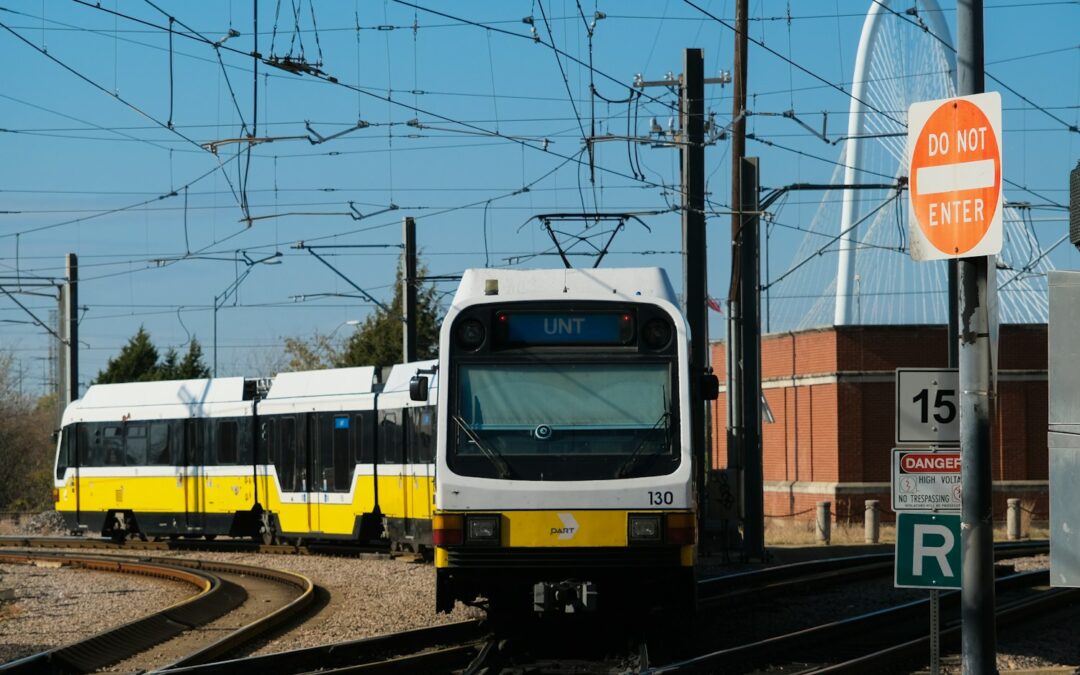The Role of IoT-Based Predictive Analytics in Traffic Infrastructure Maintenance
Leveraging IoT-Based Predictive Analytics for Proactive Traffic Management
IoT-based predictive analytics for traffic infrastructure is revolutionizing the way cities manage their urban mobility challenges, particularly in rapidly growing metropolises like Riyadh and Dubai. By integrating Internet of Things (IoT) devices with advanced analytics, cities can monitor the condition of traffic infrastructure in real time, predict maintenance needs, and address potential issues before they escalate. This proactive approach not only enhances the efficiency of traffic systems but also reduces operational costs and minimizes disruptions for commuters.
In Dubai, for example, IoT sensors are deployed across various traffic infrastructure components, including traffic lights, road surfaces, and bridges. These sensors collect data on parameters such as vibration, temperature, and wear, which are then analyzed using predictive analytics to identify patterns that indicate potential failures. For instance, if sensors detect unusual vibrations on a bridge, the system can predict structural issues and prompt maintenance teams to conduct inspections. This allows the city to address problems early, preventing costly repairs and ensuring the safety of its citizens.
Similarly, Riyadh is utilizing IoT-based predictive analytics to optimize the maintenance of its extensive traffic infrastructure. By integrating data from sensors embedded in roads, traffic signals, and other critical assets, the city can predict when maintenance is required, schedule repairs during off-peak hours, and avoid unexpected breakdowns that could disrupt traffic flow. This data-driven approach not only improves the reliability of the traffic system but also enhances the overall quality of urban mobility, making it easier for residents and visitors to navigate the city efficiently.
Reducing Costs and Improving Efficiency with Predictive Maintenance
One of the most significant benefits of IoT-based predictive analytics for traffic infrastructure is its ability to reduce maintenance costs and improve operational efficiency. Traditional maintenance strategies often rely on reactive or time-based schedules, which can lead to unnecessary repairs or overlooked issues. In contrast, predictive maintenance powered by IoT analytics focuses on actual asset conditions, allowing cities to allocate resources more effectively and avoid unnecessary expenditures.
In Saudi Arabia, cities like Riyadh are experiencing rapid urbanization, which puts additional strain on existing traffic infrastructure. By adopting IoT-based predictive analytics, the city can extend the lifespan of its assets, reduce the frequency of repairs, and optimize maintenance schedules based on real-time data. For instance, smart sensors installed on traffic lights can monitor the performance of bulbs, batteries, and circuits. When analytics indicate that a component is nearing the end of its useful life, maintenance can be scheduled proactively, avoiding sudden outages that disrupt traffic flow.
In Dubai, predictive maintenance is also being used to manage the city’s extensive network of smart roads and highways. By analyzing data from road sensors, the city can identify areas with increased wear and tear, such as high-traffic zones or locations with frequent heavy vehicle usage. This information enables targeted interventions, such as resurfacing or reinforcement, which are performed precisely when and where they are needed most. This not only enhances the durability of the infrastructure but also minimizes the impact on daily traffic, reducing congestion and improving the overall driving experience.
Enhancing Urban Mobility and Sustainability with Smart Analytics
The integration of IoT-based predictive analytics in traffic infrastructure maintenance is not only about improving efficiency and reducing costs; it also plays a crucial role in enhancing urban mobility and promoting sustainability. By optimizing maintenance activities, cities can reduce the carbon footprint associated with traffic disruptions, minimize the environmental impact of road construction, and contribute to broader sustainability goals.
In Dubai’s ongoing smart city initiatives, IoT-based predictive analytics is a key component of the strategy to reduce emissions and improve air quality. For example, by predicting and preventing road failures that lead to congestion, the city can reduce the amount of time vehicles spend idling on the roads, thereby lowering overall emissions. Additionally, predictive maintenance of traffic signals and signage ensures that traffic flows smoothly, further contributing to reduced fuel consumption and environmental impact.
Riyadh is also leveraging predictive analytics to support its vision of becoming a more sustainable and livable city. By maintaining traffic infrastructure proactively, the city can avoid the need for extensive roadworks that generate dust, noise, and other pollutants. Furthermore, by integrating renewable energy sources, such as solar-powered traffic lights, with predictive maintenance systems, Riyadh can reduce its reliance on traditional energy sources and support the transition to a more sustainable urban environment.
Implementing IoT-Based Predictive Analytics for Traffic Infrastructure Success
Developing a Strategic Framework for IoT Integration in Traffic Management
To fully realize the benefits of IoT-based predictive analytics for traffic infrastructure, cities in Saudi Arabia, the UAE, and other forward-thinking regions must develop a strategic framework that guides the integration of IoT technologies with their existing urban systems. This framework should include a comprehensive assessment of current infrastructure, identification of key areas where predictive analytics can add value, and collaboration with technology providers who specialize in IoT and analytics solutions.
In Riyadh, city planners are working closely with technology companies to deploy IoT sensors across critical traffic infrastructure, including roads, bridges, and tunnels. By establishing a centralized data platform, the city can integrate information from various sensors, allowing predictive analytics algorithms to deliver more accurate insights and recommendations. In Dubai, the approach is similar, with a focus on creating an interconnected network of smart sensors and analytics platforms that support real-time decision-making and proactive maintenance.
Executive coaching services can also play a vital role in guiding city leaders through the complexities of implementing IoT-based predictive analytics. By providing insights into best practices, change management strategies, and the latest technological advancements, executive coaches can help cities navigate the challenges of digital transformation, ensuring successful outcomes and sustained improvements in traffic management.
Ensuring Scalability and Interoperability of Predictive Analytics Systems
Scalability and interoperability are critical considerations when implementing IoT-based predictive analytics for traffic infrastructure. As cities grow and technology evolves, it is essential to ensure that predictive analytics systems can scale to accommodate increased data volumes and integrate seamlessly with other urban technologies. This involves selecting scalable IoT platforms, investing in flexible infrastructure, and adopting open standards that facilitate integration with other smart city initiatives.
In Dubai, scalable predictive analytics solutions are being deployed to monitor and manage the city’s extensive network of highways, bridges, and tunnels. By using cloud-based platforms, the city can easily expand its IoT network as new infrastructure projects are completed. This scalability ensures that the city’s predictive maintenance capabilities remain robust and responsive, even as the urban landscape evolves. Similarly, in Riyadh, predictive analytics systems are being designed with interoperability in mind, allowing them to integrate with other smart city technologies, such as AI-driven traffic management and public transportation systems.
Future-Proofing Predictive Analytics Investments for Sustainable Urban Growth
To ensure the long-term success of IoT-based predictive analytics for traffic infrastructure, cities must adopt a proactive approach to future-proofing their investments. This includes continuous monitoring of technological advancements, regular updates to existing systems, and strategic investments in research and development. By staying ahead of emerging trends, cities in Saudi Arabia, the UAE, and other regions can maintain their leadership in smart city innovation and drive sustainable urban growth.
Leadership and project management are critical in guiding the future-proofing process. City executives must foster a culture of innovation, prioritize ongoing training, and encourage cross-functional collaboration. By building a resilient and adaptable predictive analytics infrastructure, cities can navigate the complexities of a rapidly changing digital landscape and capitalize on the opportunities that IoT-based solutions offer.
In conclusion, IoT-based predictive analytics for traffic infrastructure provides cities with the tools to enhance urban mobility, reduce maintenance costs, and promote sustainability. By implementing these solutions strategically, ensuring scalability and interoperability, and future-proofing their investments, cities in Saudi Arabia, the UAE, and beyond can unlock the full potential of predictive analytics and achieve their smart city goals.
—
#IoTBasedPredictiveAnalytics #SmartCities #TrafficInfrastructure #DigitalTransformation #SaudiArabia #UAE #UrbanInnovation #PredictiveMaintenance #AIinTrafficManagement #Sustainability #SmartTechnology #ProjectManagement












